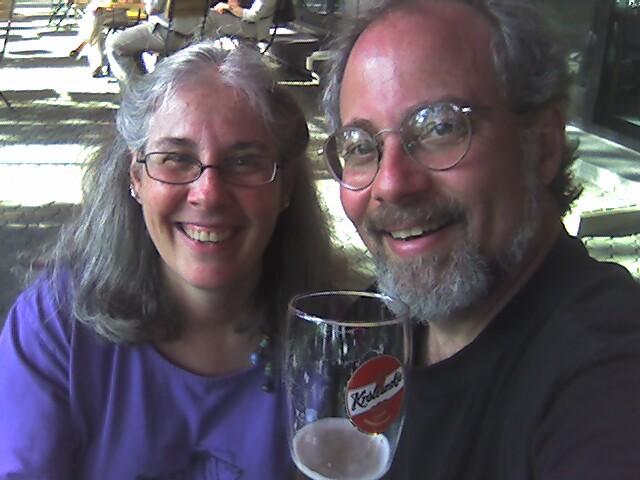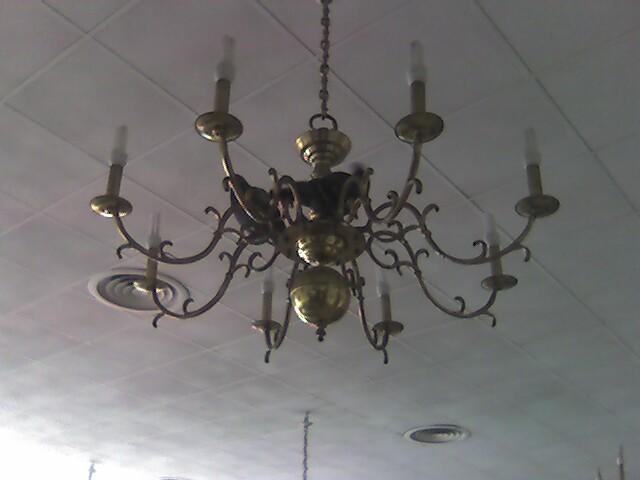Zurich to Boston

Boarding onto the jumbo jet, seat 24K (i didn't know there could be so many seatss across)

Boarding onto the jumbo jet, seat 24K (i didn't know there could be so many seatss across)

After a terrific day (Irene,Edward,Dianne,Brad touring the Warsaw ghetto sites and Mel & Marina tracking down her pre-war documents about her father and grandfather), we've gathered for a departing Polish dinner downstairs at Gotycka. Mel has regaled us with a myriad stories spanning his years in the states and abroad. We've essentially lived with each other for 2 weeks straight and everyone has been terrific. I'm sad to be parting company, this has been one extraordinary trip. I hope to have a reunion sometime in the future, maybe in Europe if we can impose on Mel & Marina! Bon apetit!

Umschlagplatz is the site from which the 370,000 Jews in Warsaw (fully one in three) were shipped in cattle cars to Treblinka death camp. The memorial is out of white marble, shaped like a cattle car, and carved with 400 names (first names only).

There's a memorial here, which was the place of the last stand of the ghetto uprising. The memorial stands atop a mound about 3 meters high, which represents the level of the pile of ruble left behind after the Nazis leveled the ghetto.

Upper left is a big monument, and foreground is an info board of facts and figures. The ghetto uprising was in April-May, 1943, the last battle at Mila #18, described in Leon Uris' novel of the same name. The stone for this particular monument was originally ordered from Sweden by Hitler for a victory arch. How fitting.

The plaque commemorates the POLISH uprising in Warsaw against the Nazis in 1944. It marks an old escape hole from the sewer system. The uprising failed, only 100 people escaped.

Sun PM-- This afternoon, Dianne and I tracked down the Nozik synagogue, the only one remaining after the war. It's quite beautiful, although it's been reconstructed (took 6 years and reopened in 1983 funded largely by Ronald Lauder Foundation) and was used as a horse stable and food store after the war. It's in use properly now, and has a terrific photographic exhibit in the back upstairs of pre-war and current scenes of the temple and surrounds. Afterwards, we enjoyed some refreshment overlooking a lovely park near the hotel.

Wazienki park is a huge park which encloses the Royal Palace, ponds with gondolas, and lots of peacocks. And every Sunday there's a free Chopin concert outdoors which we sat and listened.

Wazienki park is a huge park which encloses the Royal Palace, ponds with gondolas, and lots of peacocks. And every Sunday there's a free Chopin concert outdoors which we sat and listened.

Sat AM-- One night Dianne and I went to walk off dinner and wound up on Szeroka St. and ran into this threesome from Montreal. Danny was on a roots trip with his parents, Aaron and Rachel. Aaron was born in Poland up near the Russian border and spent the war years shuffling from one ghetto to the next, then a series of camps including Majdanek. He lived in Poland for a time after the war, then in Israel for a year, and finally landed in Montreal. Son Danny has 4 boys and is an electrical engineer. They ended up staying at our hotel, so we got to have breakfast with them this morning before they return to Canada. We'll be in touch, and we hope to see him and his family in Boston some day.

Do vidzenia y dziêkujê Justyna (pictured above with Dianne) y Agnieska. Our stay at the El Jot hotel was made even better by our lovely and helpful hosts, who always greeted us with smiles. They really went out of their way to help us, and they were very friendly. We recommend this hotel for price ($50/night), location (Jewish quarter), and hearty breakfasts.
We're now hoofing it with our wheelie baggage to the train station, but we've stopped at San Sebastian cafe across the street from our grandparents' apartment for a last bite to eat. This is also the cafe where we had our first meal in Cracow, so it's fittingly our last stop.
We have had a truly remarkable stay here in Cracow! Perhaps we'll return some day!

Today was an unstructured day, Dianne and I wandered around old town, did some shopping, only meeting up for meals. For dinner we wound up in Kaszimierz (old Jewish section) at Noah's Ark, one of several restaurants that have a decidedly Jewish theme, complete with live 3-piece Klezmer band. So we spent a good part of the evening arguing the finer points of just how ironic the "Jewish revival" in Krakow is.
At the end of the meal I remembered that my neighbor, Josh who worked for the State Department and lived in Warsaw, told me to definitely try Buffalo Grass vodka. So I asked our waitress, Wiesia (pictured above), if she has something called zubroovka (best as I could remember from Josh's notes) and sure enough she darts out and back with a bottle of vodka that has a label with a buffalo, and a tall stalk of grass inside the bottle (sort of like the worm in Tequila). Unlike in Russia, vodka is not downed in a single swallow here, but savored like a aperitif. It was very smooth, everyone agreed (like all the food we've ordered, this too was shared!). I think I'll get some at the duty-free shop.

We went to the Wieliczka salt mines outside of Krakow this morning. It's the oldest salt mine in the world, dating back to the 11th century, with the deepest level reaching over 1,000 ft below the ground. There are many levels and over the centuries many chapels were created in various nooks and crannies. One of them is quite large, and has some beautiful carvings done in relief right out of the salt mineral walls. The picture shows one of the carvings, the Last Supper.
Presumably they're not having pork.

Dianne and I have checked back into our hotel, dried our clothes, blogged and such, and now we're sitting at this lovely restaurant Pod Baranem (under the ram) sipping Polish beer and chatting. The waiter is very nice. I made the mistake of ordering my two dishes in perfect Polish and he then spewed a string of questions in Polish that I had to look sheepishly at him and shrug my shoulders. Mel and Marina are still resting back at their hotel, it's too early to eat for Parisians!

The countryside almost looks like it does in France, with lots of terraced fields, very well manicured and tended, not a lot of junk piles as you find in Russia and elsewhere. This is a shot from the window of the bus. Back before the war there wasn't much except farmland between Krakow and Warsaw and a couple of other cities, but there's a tremendous amount of construction going on now, lots of newer homes, many quite nice judging by the exteriors.

Wed AM-- It's raining this morning (misting really) and foggy, so our plan is to have breakfast, head up the cable car, have a look around, and then catch a bus back to Krakow after noon. The hotel we're staying, the Giewont, is one of the older ones, judging by the huge porcelain (!) chandeliers and the 15 foot corniced wood ceiling in the dining room (you might be able to make them out in the photo.) They look original and in some disrepair but stunning.

Tue PM-- Just under 100 km south of Krakow lie the Tatry mountains that border Slovakia, with peaks at around 8000 ft. On the Polish side at the base, Zakopane is a very cute little village with shops, trams partway up the mountains, and ski lifts even further running in the winter. The traditional architecture is like the picture. Irene used to come here with her father, and the main town to the north, Nowy Targ, is where the summer camp that Irene went just before war broke out in 1939 (old photo of her from the exhibit, see earlier post).
So we spent a beautifully clear afternoon and evening strolling and enjoying the incredible views of snow-capped peaks all around. Just around the corner from our hotel, Giewont, we had dinner (more meat!) and a VERY loud traditional Polish folk band (cello, viola, 2 violins) in some weird tuning played almost dischordant music and singing. It would have been nicer softer. But we had a great time and got back very late.

So we hoofed it to the bus station a bit early so that we could poke around before meeting mom & Edward and Mel & Marina. It turns out the bus station is at the train station, which is very pretty inside. The old European train stations typically had lots of wood panelling and ornamentation. The picture shows one of the bezillion chandeliers. The old gas mantles have been replaced with flourescent screw-in bulbs, but are still exquisite. Unfortunately, you must be very careful not to walk underneath them since the windows to the station are left open and the pigeons find the chandeliers quite nice place from which to spot crumbs and such. Splat!